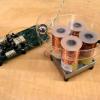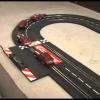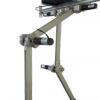Research
Our research revolves around computational issues related to feedback control design. We also enjoy finding further challenges for development of theoretical results in diverse application domains, mainly relying on electrical and electromechanical principles.
We study the problem of noncontact planar manipulation by shaping a magnetic (force) field. The field is generated by a regular array of coils and we shape it by controlling the electric currents through the coils. The field is shaped so that one or several steel balls placed on top of a flat surface above the coils are (simultaneously yet independently) steered along specified paths and/or to specified target destinations. Feedback from measured position(s) is used.
The current mainstream paradigm in control systems is that all the relevant measured variables are brought to a central computer (controller), processed all at once and finally the resulting commands are distributed to the individual actuators. The last decades have witnessed a growing number of applications in which the number of such measured and command variables is huge, easily above a few hundred or thousand signals. With the advent of MEMS devices, more then a hundred thousand variables can easily appear in a given application.
Since 2006 our group has been involved in an R&D activity funded by Ministry of Industry and Trade of the Czech Republic and aimed at development of an inertially stabilized camera platform for aerial surveilance. The coordinator of the project is Czech Air Force and Air Defense Technological Institute (VTÚLaPVO) (a branch of LOM Praha).
We study the problem of noncontact planar micromanipulation by shaping a force field which derives from an electric field. The electric field is shaped by controlling voltages applied to the array of (micro-)electrodes. Objects located in the field then move in response to the electric field. In particular, even when the particle(s) located in the electric field are uncharged, they can still "feel" a net force as an outcome of their polarization and subsequent interaction of their dipole (quadrupole, octopole, ...) with the surounding electric field.
We focus on modelling and control of underactuated mechanical systems. Underactuated mechanical systems are mechanical systems having less actuators than the number of degrees of freedom. The simplest underactuated mechanical system is the Acrobot which has two degrees of freedom and one actuator placed between its rigid links. The Acrobot is one of the classical mechanical systems that have been studied extensively in the control area during the past few decades.





